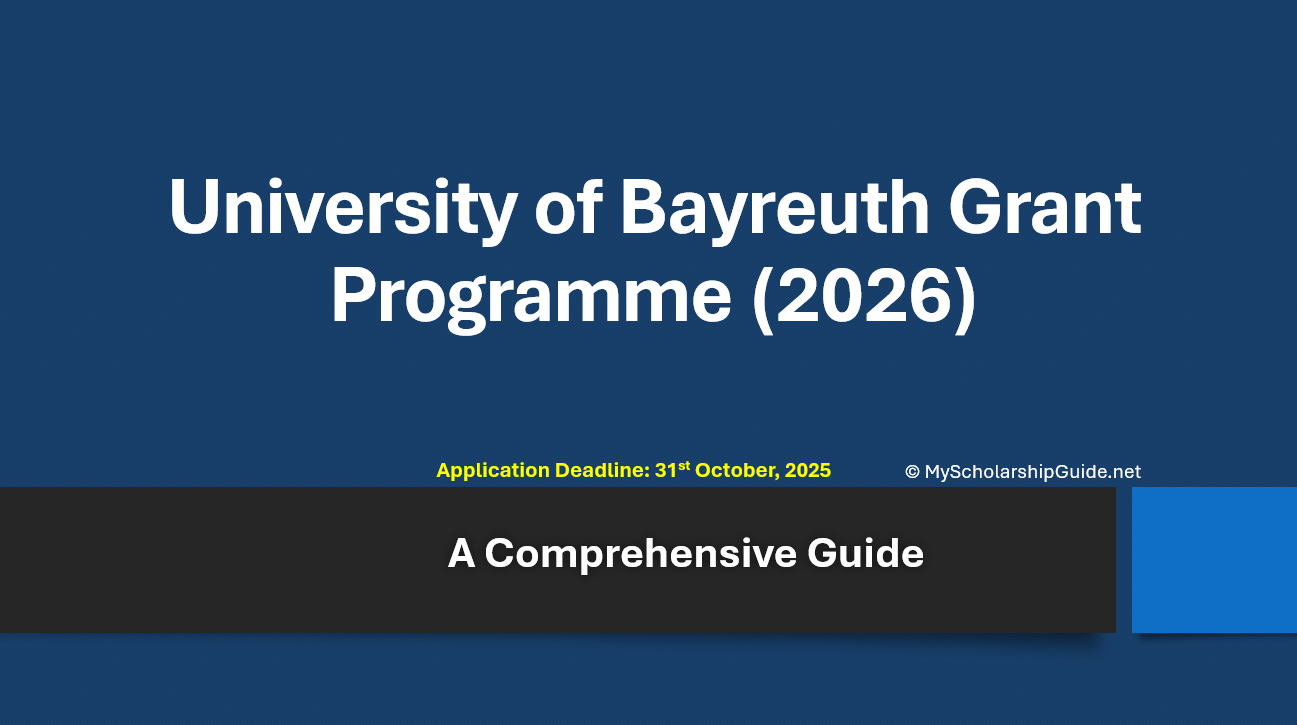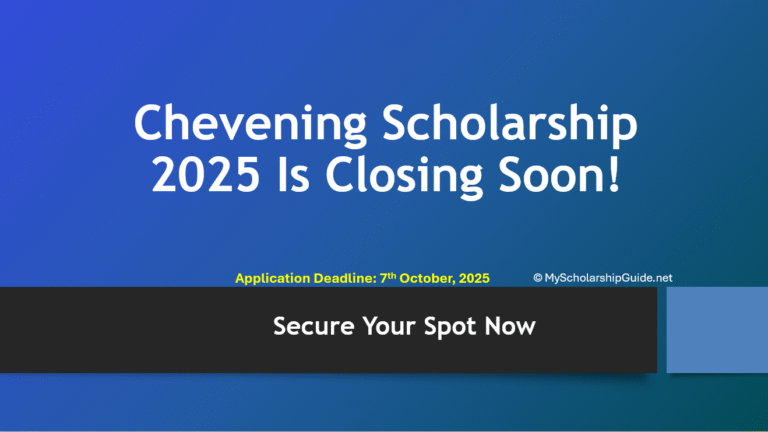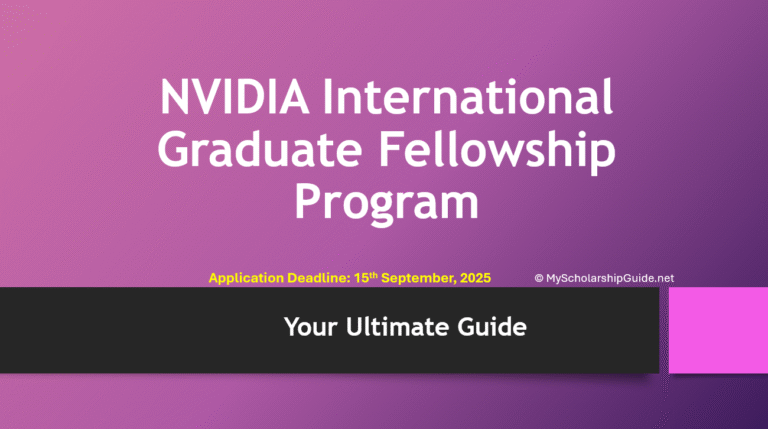How to Win the University of Bayreuth Grant Programme (2026)
How to Win the University of Bayreuth Grant Programme (2026)
The world of academia is a challenging but rewarding landscape, and securing funding is often the first significant hurdle. For ambitious international researchers seeking to take their projects to the next level, the University of Bayreuth Grant Programme (2026) represents a coveted opportunity. This grant is more than just a financial award; it’s an invitation to join a vibrant, international research community and establish a collaborative foothold in Germany.
Winning the Alexander von Humboldt Starter Grant is a testament to your research’s quality and your potential for global impact. The committee is looking for more than just a strong project; they’re searching for a visionary scholar who embodies the spirit of interdisciplinary collaboration and international exchange.
This detailed guide is your roadmap to a successful application. We will break down the core values of the Alexander von Humboldt Starter Grant, provide a meticulous walkthrough of the research proposal, and offer strategic advice on every other component of your application. From finding the perfect local host to highlighting your unique profile, you’ll learn exactly how to position yourself as the ideal candidate for the University of Bayreuth Grant Programme (2026).
The Foundation: Understanding the Alexander von Humboldt Starter Grant
To win this prestigious award, you must first understand the mindset of the selection committee. The University of Bayreuth Centre of International Excellence “Alexander von Humboldt” Starter Grant Programme is built on a foundation of specific, deeply held values that guide every decision. Your application must not only meet the requirements but also resonate with these core principles.
A Deep Dive into the Programme’s Values
The name “Alexander von Humboldt” itself is a clue. Alexander von Humboldt was a Prussian polymath, geographer, and naturalist whose pioneering work in botany and geology was deeply interdisciplinary. He was a quintessential explorer and a promoter of global scientific cooperation. The grant that bears his name seeks to honor this legacy by supporting scholars who share a similar vision.
The committee’s values, as outlined on their official website, are crystal clear:
- Interdisciplinary Collaboration: This is a cornerstone of the Alexander von Humboldt Starter Grant. The committee wants to see your project transcend the boundaries of a single field. They are looking for projects that connect with multiple disciplines and demonstrate a capacity for innovative, cross-functional thinking. When you write your proposal, think about how your work could inform or be informed by other departments at the University of Bayreuth.
- International and Cross-Cultural Exchange: Your status as an international researcher is not a mere formality—it’s a strength. The program is designed to foster a global network. Showcase how your research is relevant on a global scale and how you plan to contribute to this international exchange, both professionally and culturally. This goes beyond simply being from another country; it’s about bringing a new perspective and actively engaging with a different academic culture.
- Networking with UBT’s Research Community: The selection committee is investing in a scholar who will become an active, long-term member of their community. Your local host is the starting point, but they want to see a commitment to building a wider network. Mention how you plan to engage with other faculty, attend seminars, or participate in university-wide events. This shows a genuine interest in the institution, not just the funding.
- Gender Equality and Diversity in Research: The program explicitly encourages applications from women and individuals who can enhance the university’s research diversity. This isn’t just a boilerplate statement; it’s a value they actively pursue. If you are a woman or a member of an underrepresented group, this is an opportunity to highlight how your unique perspective and background will contribute to the diversity of thought and experience within the Bayreuth research community.
- Academic Excellence and Potential for Long-Term Cooperation: The most fundamental requirement is a stellar academic record. Your publications, research history, and the quality of your proposed project must be top-tier. The “Starter Grant” is designed as a springboard; a successful grantee may apply for a follow-up “Booster Grant.” This means the committee is looking for a project with staying power and a scholar with the potential for a long and fruitful relationship with the University of Bayreuth.
The Ideal Candidate Profile
The ideal candidate for the University of Bayreuth Grant Programme (2026) is not a siloed specialist but a global-minded, collaborative academic. You are someone who:
- Has a “Big Picture” Vision: Your research project is not just a narrow, technical exercise. It addresses significant questions and has implications that stretch across disciplines.
- Is a Proven Scholar: Your CV and publication list demonstrate a history of high-quality, impactful work. You are a recognized expert in your field.
- Is a Connector: You are proactive in seeking out collaborations and are excited about the prospect of integrating into a new academic environment. You see the value in building bridges between your home institution and the University of Bayreuth.
- Embraces Diversity: You understand that a diversity of perspectives strengthens research and are eager to contribute to and benefit from a diverse academic community.
Essay Mastery: Your Research Project Proposal
Unlike many other scholarships, the University of Bayreuth Grant Programme (2026) does not have a traditional personal essay prompt. Instead, your Research Project Proposal is your primary written component—it is your essay, your personal statement, and your strategic plan all rolled into one. This document is where you must demonstrate your academic prowess and your alignment with the program’s values. It’s an opportunity to tell a compelling story about your research.
While there is no explicit prompt, the implied questions are: What is your research? Why is it innovative? Why is a collaboration with the University of Bayreuth essential? What long-term impact will this grant have on your career and the university?
The Research Project Proposal Breakdown
Your proposal needs to be a masterpiece of clarity, innovation, and strategic thinking. Here is a deconstruction of what a successful proposal should look like.
- The Hook: Your Project’s Vision
Start with a powerful, one-paragraph summary. This is your “elevator pitch.” State your research question, the core innovation, and the expected high-level outcome. Make it compelling. Don’t waste time with platitudes; get straight to the point and showcase the significance of your work.
- The Research Problem & Innovation
- Meticulously define the problem: What gap in existing knowledge are you addressing? Why is this problem important?
- Explain your innovative approach: How is your methodology, theoretical framework, or interdisciplinary angle different from the current state of the art? This is where you demonstrate the “top academic quality” the committee demands.
- Implicit Qualities: The committee is looking for a project that challenges existing paradigms. Show them you are a forward-thinker, not just a practitioner of established methods.
- Brainstorming Your Strategic Angles
Since your proposal is the centerpiece, here are 3-5 strategic approaches to making it stand out:
- Interdisciplinary Integration: Proactively identify and name specific departments, centers, or even individual researchers at the University of Bayreuth beyond your local host that your research will interact with. For example, if your work is in digital humanities, you might mention a collaboration between the history department and the computer science faculty. This directly addresses the program’s value of interdisciplinary collaboration.
- Narrative of Necessity: Frame your time at the University of Bayreuth as the essential missing piece for your project’s success. Explain why their specific resources, expertise, or research environment are critical for achieving your goals, thereby making a strong case for the Alexander von Humboldt Starter Grant.
- The “Starter Grant as a Seed” Approach: Position the grant not as a one-off project, but as the foundational seed for a larger, long-term collaboration. Mention how the results of this initial project will lead to a bigger joint publication, a co-organized workshop, or a follow-up application for the Booster Grant. This speaks to their desire for long-term cooperation.
- Global Relevance & Diversity: Explicitly link your research to global challenges or cross-cultural dialogue. If your research on climate policy in your home country can inform similar policy discussions in Germany, highlight this. If you come from an underrepresented background and your work brings a unique cultural perspective to a field, make that a central part of your narrative.
- Common Mistakes to Avoid
- Failing to Connect with UBT: The most significant error is submitting a generic research proposal that could be for any university. You must explicitly tie your project to the University of Bayreuth, its research focus areas, and its community.
- Overly Technical Language: While the proposal must be rigorous, it should also be accessible. Remember that the selection committee is composed of academics from a wide range of disciplines. A colleague from a different field should be able to grasp the significance of your work.
- Lack of a Clear Timeline and Outcomes: A strong proposal has a well-defined plan. Detail your methodology, a clear timeline for your research activities, and a list of concrete deliverables (e.g., publications, conference presentations, data sets).
- Detailed Sample Proposal Outline
- Paragraph 1: Executive Summary / The Hook: A concise, powerful introduction to your research question and its significance.
- Paragraph 2: Research Problem & State of the Art: Contextualize your work. What is the current scientific debate? What is the gap you aim to fill?
- Paragraph 3: Methodology & Innovation: Detail your proposed approach. Clearly explain why your methods are the best choice and where your innovation lies. This is where you demonstrate the academic excellence of your University of Bayreuth Grant Programme (2026) project.
- Paragraph 4: Collaboration & UBT Integration: This is a crucial paragraph. Explicitly state how your work connects with your local host’s research and how you plan to network with the wider UBT community. Mention specific faculty or research groups you hope to engage with.
- Paragraph 5: Timeline & Expected Outcomes: Provide a clear, step-by-step plan. What will you accomplish during your grant period? What are the tangible results you will produce (e.g., a paper submitted, a workshop organized)?
- Paragraph 6: Long-Term Vision & Conclusion: End by reiterating your commitment to a lasting relationship with UBT and how this grant will serve as a foundational step for future collaborations and your career.
Beyond the Proposal: A Guide to Other Starter Grant Components
While the research proposal is the heart of your application for the University of Bayreuth Grant Programme (2026), the other components are essential for creating a complete and compelling narrative. Each document must reinforce the story of your project and your commitment to the program’s values.
The Local Host: A Strategic Partnership
The agreement or confirmation from a local host at the University of Bayreuth is not a simple letter of support; it’s evidence of a strategic partnership. The committee wants to see that you and your host have a genuine, shared vision.
- Who to Ask: Your host should be a senior faculty member (Professor, Junior Professor, etc.) whose research aligns with or complements your own. They should be enthusiastic about your project and willing to actively collaborate.
- How to Secure It: Don’t send a cold email with a vague request. Craft a concise, professional email that introduces yourself and your innovative project. Explain exactly why you believe their expertise and the resources at the University of Bayreuth are the perfect fit. Attach a draft of your research proposal to give them a clear picture of your plans.
- Hot Tip: When you communicate with a potential host, don’t just ask for a letter. Show them how this collaboration will be mutually beneficial. Explain how your project will contribute to their research, open up new avenues for their team, or lead to a joint publication that will benefit both of you.
The Curriculum Vitae (CV)
Your CV is not just a list of your achievements; it’s a narrative of your academic journey. For the Alexander von Humboldt Starter Grant, your CV should highlight:
- High-Ranking Publications: This is a key selection criterion. Bold your most significant publications in top-tier journals. Include a brief, one-sentence description of the impact or key finding of each major publication.
- International Experience: Any prior international research, collaborations, or conference attendance should be prominently featured to show your history of global engagement.
- Interdisciplinary Work: If you have worked on interdisciplinary projects, make them easy to spot. This could be through joint publications with colleagues from different fields or research projects that bridge multiple disciplines.
Other Components
- Completed Application Form: This seems simple, but attention to detail is paramount. Fill out the form meticulously. Any discrepancies between the form and your other documents could raise red flags.
- Proof of Affiliation: Ensure this document is official and clearly states your affiliation with an institution outside of Germany.
- Additional Documents: Read the official Application Guidelines provided by the Humboldt Centre very carefully. Do not assume anything. If they require a specific format for your publications list or a summary of a previous project, follow those instructions precisely.
Final Steps: Your Application Submission Checklist
You’ve done the hard work of crafting a compelling application for the University of Bayreuth Grant Programme (2026). Now, it’s time for the final, critical steps to ensure your submission is flawless.
The Power of Proofreading
After weeks of working on your proposal and gathering documents, your eyes can start to miss errors. This is the single most common reason why otherwise excellent applications get rejected.
- Read it Aloud: Reading your proposal and other documents aloud forces you to slow down and catch awkward phrasing or grammatical errors that you might otherwise gloss over.
- Get a Second Pair of Eyes (or a Third): Ask a trusted colleague, mentor, or even a friend from outside your field to review your materials. They can spot both typos and areas where your logic or language might not be clear.
- Check Formatting: Ensure your proposal and CV adhere to any specified formatting requirements. Clean, professional formatting shows attention to detail.
Cohesion Check
Your application should tell a single, unified story. As you review your final package, ask yourself:
- Does my CV support the claims of academic excellence I make in my proposal?
- Does the research plan in my proposal clearly require a collaboration with the University of Bayreuth and my local host?
- Do all the documents reflect a commitment to the values of the Alexander von Humboldt Starter Grant, such as interdisciplinary work and international exchange?
Deadline Management
The final deadline is not a target—it’s a hard stop. Do not wait until the last minute. Technical issues, slow internet, or last-minute questions can derail your submission. Aim to have everything finalized and submitted at least 48 hours before the official deadline.
Resources & Conclusion
Securing the University of Bayreuth Grant Programme (2026) is an exceptional achievement that will profoundly impact your research career. By meticulously preparing your application, aligning your narrative with the program’s core values, and presenting a compelling vision for your project, you put yourself in the best position to succeed.
- Official Scholarship Website Link: https://www.humboldt-centre.uni-bayreuth.de
- University of Bayreuth Research Focus Areas: https://www.uni-bayreuth.de/en/research
Now that you have this roadmap, it’s time to get to work. Start by reaching out to potential local hosts, refining your research vision, and beginning the process of crafting a flawless, compelling application. The committee is waiting to be impressed by your vision and your potential. Good luck!
Disclaimer
Unless otherwise stated, www.myscholarshipguide.com is not affiliated with any of the scholarship providers listed on our website, nor do we process applications on behalf of any organization. The content provided is for informational purposes only, and visitors are encouraged to use this information at their own discretion.







